ASUS is one of the biggest names in the world of PC gaming. Its core lineup catering to gamers called ROG (Republic of Gamers) has been lauded for its performance-oriented devices with aesthetics to woo the gaming audience. A couple of years back, the brand tried to implement the same philosophy with smartphones when it created a lot of hype around the ASUS ROG Phone. Now two years later, we are seeing the third iteration of the device and it is again setting a new bar for smartphone computing. While ASUS has slightly diminished the gamer vibe, other important aspects have received a big boost.
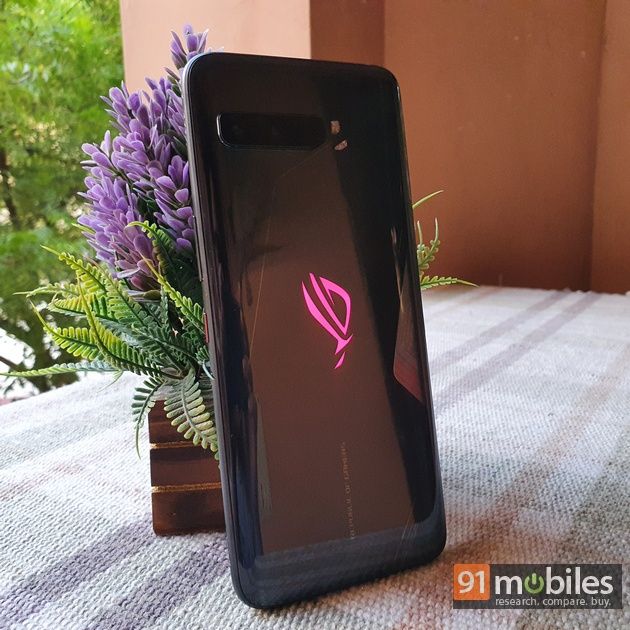
The ROG Phone 3 is priced at Rs 49,999 for the 8GB RAM + 128GB storage variant, which is what I have received. There is also a 12GB RAM + 256GB version costing Rs 57,999. There is a significant increase from the price of the ROG Phone 2 which costs Rs 39,999 for the 8GB RAM configuration. Is the new ROG Phone 3 still at the top of the smartphone gaming pedestal? There is no doubt that ASUS has the advantage of years of experience in the gaming world, which has helped mould the phone. In this review, I will try and find out what outlandish tricks have been performed by ASUS to enhance the gaming experience even more than its previous two power-packed phones.
Verdict
If it is the ultimate gaming smartphone that you are looking for, then ASUS’ ROG Phone 3 has delivered with what is quite likely the most powerful smartphone in the Indian market. However, if it is an everyday flagship that you want, the latest OnePlus 8 Pro (review) or the iQOO 3 (review) could be a more reasonable choice.
Design and display
- Display: 6.6-inch FHD+ AMOLED
- Refresh rate: 144Hz
- Protection: Corning Gorilla Glass 6
- Connectivity: USB Type-C x2
The ROG Phone 3 is a big phone and I mean a really big phone. ASUS has still not opted in for any kind of punch hole or waterdrop-notch design with the phone. Instead, you get a giant screen and thick bezels on the bottom and top which house stereo speakers. One-handed use will be cumbersome and rightly so since this is a device that has been designed for two-handed landscape use. The back of the phone matches quite closely with the previous-gen ROG Phone 2 in terms of the instantly recognisable “aerodynamic look”. The signature RGB-lit ROG logo is placed bang at the centre of the back, but you do see the heatsink shrunken in appearance while the pattern of the lines streaking down has been changed slightly from last year. Otherwise, you do get more or less the same cyberpunk tones which you would associate with the ROG Phone lineup. The device has some weight to it, given its hefty internals. At 240gm, nearly quarter of a kilo, it is one of the heaviest phones on the market. The front is protected by Corning Gorilla Glass 6 while ASUS hasn’t revealed the protection on the back.
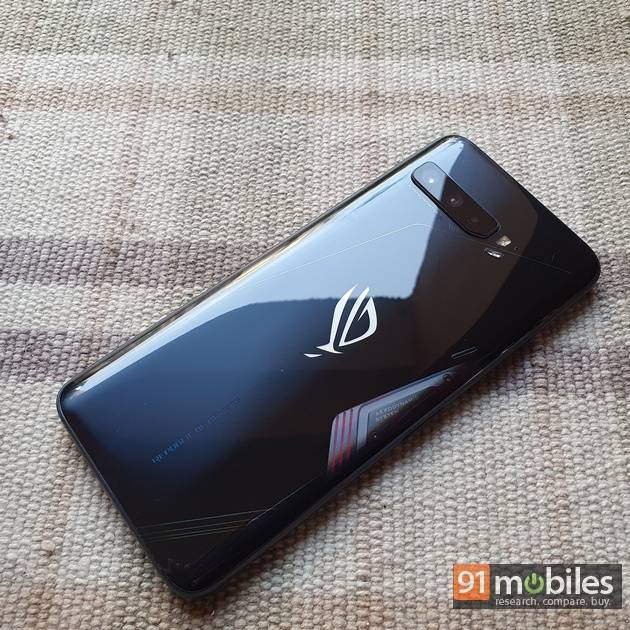
The capacitive shoulder buttons, an assist for PUBG Mobile players, are still present on the right of the phone placed alongside the extremely tactile power and volume rocker keys. The left side of the phone has a single opening covered with a rubber tab, which hides the proprietary port for accessories alongside a secondary Type-C port. One big omission from the ROG Phone 3 is the headphone jack which I feel is a big part of a gaming-oriented device. Quite a few mobile gamers prefer the zero-latency wired audio experience on games such as PUBG. That said, ASUS does sell the Aeroactive Cooler 3 for the ROG Phone 3 separately, which is an accessory that fits on the proprietary slot to provide cooling and also a headphone jack. There is no IP rating for waterproofing nor is there any wireless charging, and to be fair neither are a necessity for the niche gaming audience. What is a necessity is a robust cooling mechanism which will deliver longer and sustained performance under load. On that front, the copper heatsink in the ROG Phone 3 is supposed to be six times bigger than its predecessor. Lest we forget, the phone also packs in a triple camera setup with a dual-LED flash setup. On the front, there is a single selfie shooter packed into the top bezel.
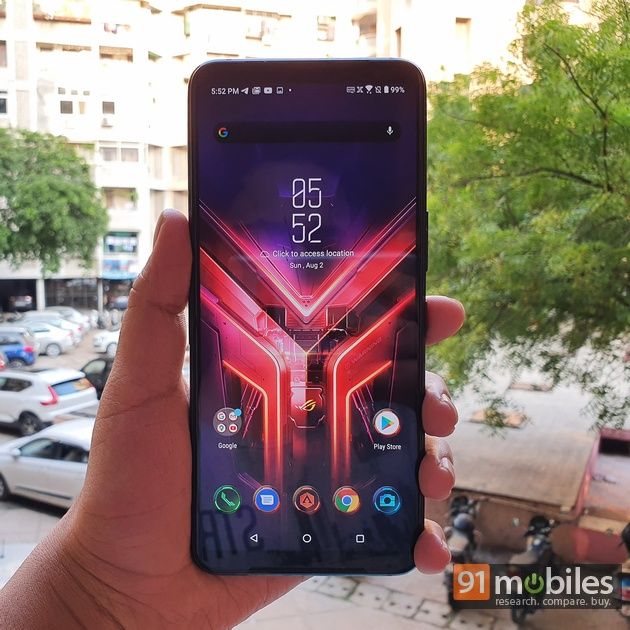
Any capable gaming device needs to have a great display and ROG Phone 3 goes into overkill mode with this one. The device has a 6.59-inch AMOLED panel with chunky bezels on all sides and FHD+ resolution. No gaming phone can be considered complete without a high screen refresh rate and the ROG Phone 3 packs in a mind-boggling 144Hz panel. Only the Nubia Red Magic 5G currently has a screen that can refresh at 144Hz but it is not available in India. Of course, no game on the market supports such a high refresh rate but it is always nice to see the extremely fluid animations during general navigation on the phone. You can obviously adjust the refresh rate at four levels all the way to 60Hz, but I would recommend keeping the setting at auto for the phone to intelligently detect where a higher refresh rate is required and conserve battery. I have used the 120Hz display on the ROG Phone 2 and there is not much of a discernible difference between a 120Hz panel and a 144Hz panel.
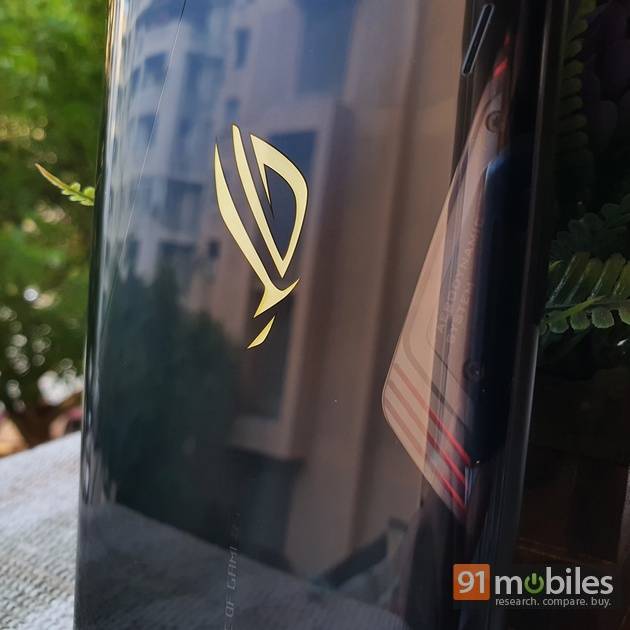
The display quality on the device is also extremely good, as can be expected from a gaming phone. ASUS has used a 10-bit display that is capable of displaying 1.07 billion colours and also is HDR10+ certified. In general, videos and images viewed on the screen are extremely vivid and crisp with excellent contrast ratios. The viewing experience can also be customised under different profiles. There is the Natural mode which takes a slightly less saturated approach with the pictures retaining quite a lot of their natural colours. Cinematic mode boosts up the colours and dynamic range while the default mode is a mix of both the modes mentioned above. Colour temperatures can be manually customised. Apart from this the phone also has the always-on display feature and the option to change the theme to dark mode.
Performance and software
- Chipset: Qualcomm Snapdragon 865+
- RAM: 8GB and 12GB LPDDR5
- Storage: 128GB and 256GB UFS 3.1
- Software: Android 10 with ROG UI
If hardware specs were a kingdom then the ROG Phone 3 is the King. Whether it’s the Apple iPhone 11 Pro Max (review) or the Samsung S20 Ultra (review) or the OnePlus 8 Pro, no one can top the ROG Phone 3 in terms of sheer processing prowess. Under the hood, is a Qualcomm Snapdragon 865+ chipset, a first in the world of smartphones. ASUS says that the SD865+ provides a 10 percent increase in graphical performance as compared to the Snapdragon 865. As usual, it wouldn’t be a ROG Phone without a bit of CPU overclocking, and as such the 865+ on the device has a maximum frequency of 3.1GHz. This is significant because the ROG Phone 3 is the first phone to cross the 3.0GHz threshold after boosting the clock speeds last year to 2.91GHz. ASUS has worked with Qualcomm to customise the clock speeds manually for apps that are not processor intensive to conserve battery.
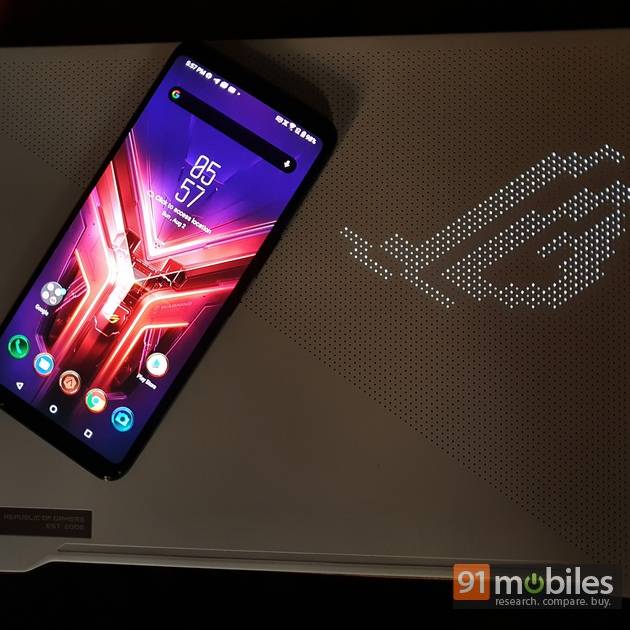
Apart from the fastest mobile SoC, the ROG Phone 3 also packs in the fast UFS 3.1 storage with a capacity of 128GB or 265GB, although in Western markets you can get the 512GB variant as well. In the RAM department, ASUS has put the super-fast LPDDR5 but capped the limit at 12GB, while in other markets you can get an insane 16GB RAM version of the device as well. With all the flashy internals and overclocking, you can pretty much guess that the ROG Phone 3 kills it in all the benchmarks.
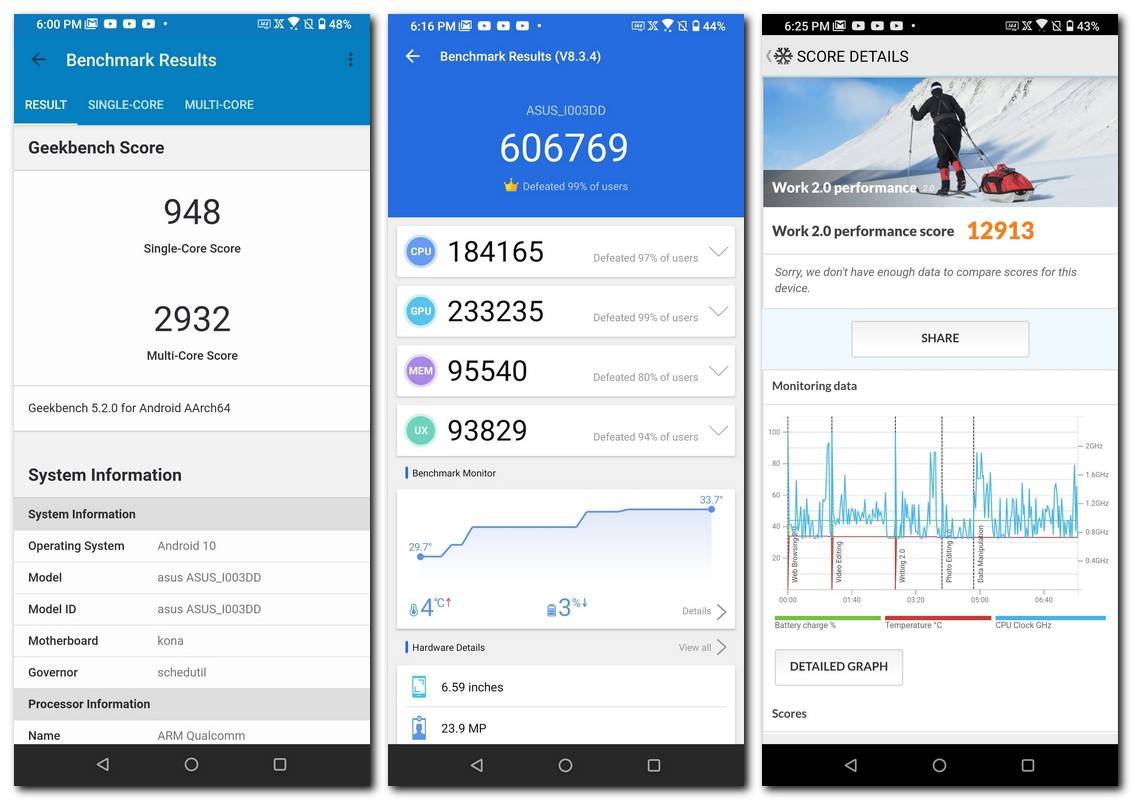
On AnTuTu, the device registered the highest score I had ever seen on a smartphone in India at 606,769 which narrowly beats the iQOO 3 5G. On Geekbench 5, the ROG Phone 3 has single-core and multi-core scores of 948 and 2932 respectively while PCMark Work 2.0 revealed a score of 12,913. Even with all this brute force behind it, the ROG Phone 3 still manages to run cool for a very long time.
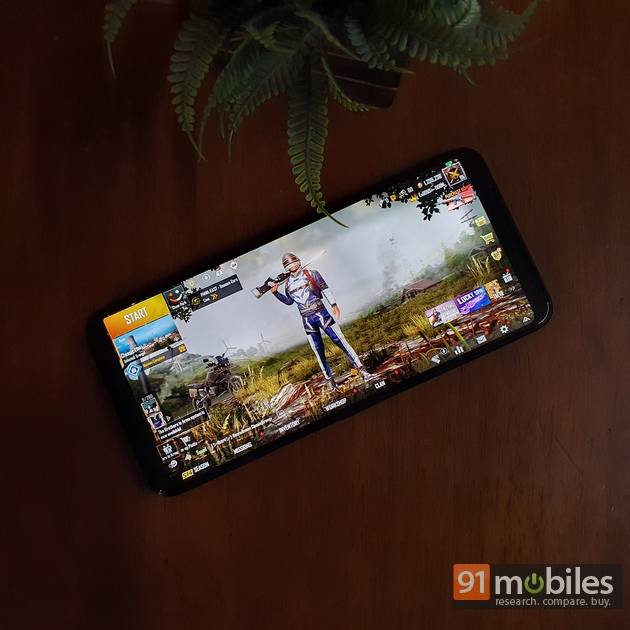
I guess the real reason why anyone would by the ROG Phone 3 is to play extreme graphical games such as PUBG Mobile and Call of Duty Mobile. Now in case, it hasn’t been made abundantly clear, the ROG Phone 3 is the fastest phone currently in the market which makes gaming on the device a breeze. It goes without saying that both PUBG Mobile and Call of Duty Mobile operate on the highest graphics and frame rate settings possible in the game. While neither game supports 144Hz refresh rate, there are zero frame drops at the highest frame rate settings even when I played continuously for over 2 hours. The ROG Phone 3 has a setting called the X Mode which includes perhaps the most extensive array of customisations that I have seen on a smartphone. You can change the clock speed of the processor and GPU, change the fan speed if you have the Aeroactive Cooler 3 attached and also check the current temperature of the device. Apart from that, you can also customise the sensitivity of the Air Trigger buttons and change the lighting of the RGB logo on the back. Each game can have a different profile customised to its performance needs. The ROG Phone 3 also brags of a touch latency of 25ms which ASUS claims is the lowest in the smartphone industry.
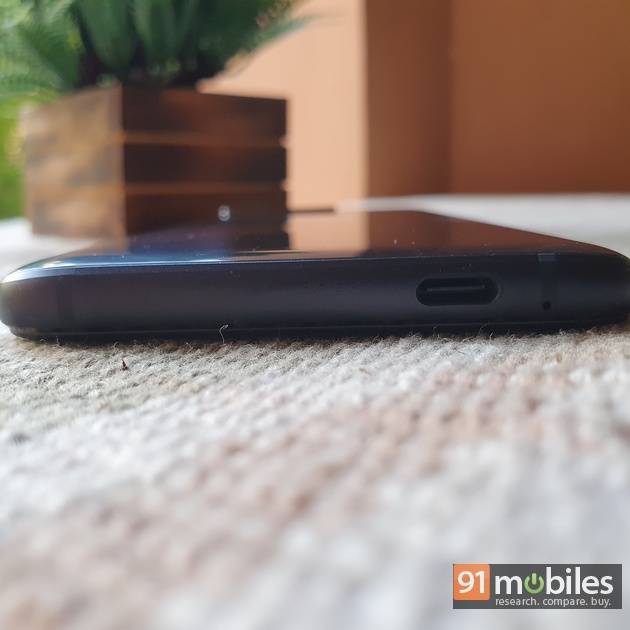
The ROG Phone 3 employs an in-display fingerprint sensor which, for a phone that is centred around blazing fast speed, is surprisingly slow in terms of response. It is accurate for the most part but I had to resort to the pin code after multiple failed attempts. A special mention is definitely needed for the incredibly loud stereo speakers on the front. ASUS says that the ROG Phone 3’s speakers have a seven-magnet design for a loud and crisp audio experience. They are quite possibly the loudest speakers I’ve heard on a smartphone and I was super impressed by the depth and bass that they produced. This time around the ASUS does not employ DTS:X for high-res audio through your earphones but has used the services of Swedish company Dirac to provide a new audio platform called GameFX. While I cannot directly compare DTS:X with GameFX, I can safely say that the sound signature is one of the best in class and extremely rich in detail.
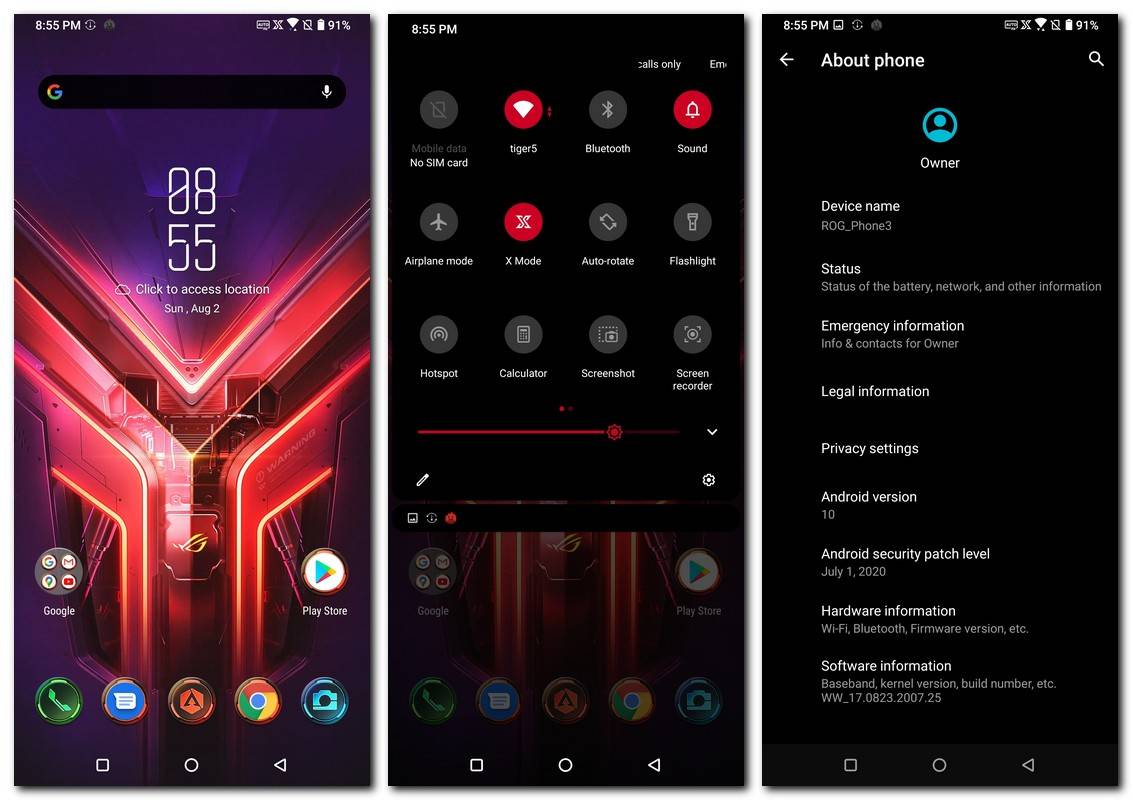
As far as software goes, the ROG Phone 3 runs a proprietary interface called the ROG UI which is based on Android 10. The aggressive gamer aesthetic from the hardware spills over into the core software of the ROG Phone 3 as has been the case for previous iterations of the device. I have already mentioned about X Mode and its various features to amplify the gaming experience. Other parts of the software are stock Android like, quite akin to ASUS’ ZenUI found on the ZenFone series. The heavy-duty internals provide for the kind of fluid animations and smooth navigation that I have been seeing on previous versions of the device.
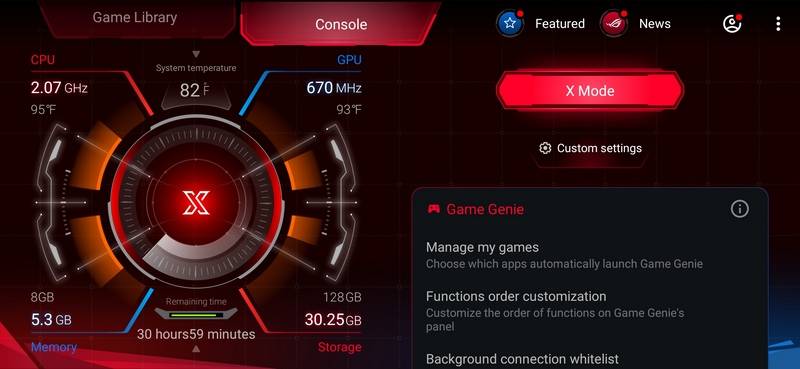
Battery
- Capacity: 6,000mAh
- Charging speed: 30W Hypercharge
- 0-50 percent time: 30 minutes
The original ROG Phone had been criticised quite heavily for its less than average battery performance and so ASUS has been making amends in that particular department. Like last year, the ROG Phone 3 packs in a 6,000mAh battery which is designed for delivering the longest gaming performance at the highest graphics settings. To that end, the ROG Phone 3 gave me about 3 hours of intensive PUBG Mobile gameplay at near full brightness before the battery drained out. It is the longest I’ve seen a phone last on a continuous run of PUBG Mobile. The entire test was carried out on an automatic refresh rate setting and X Mode on. Our standard battery test, which involves running a video on loop at half brightness and volume, gave a run time of 33 hours which is extremely good.
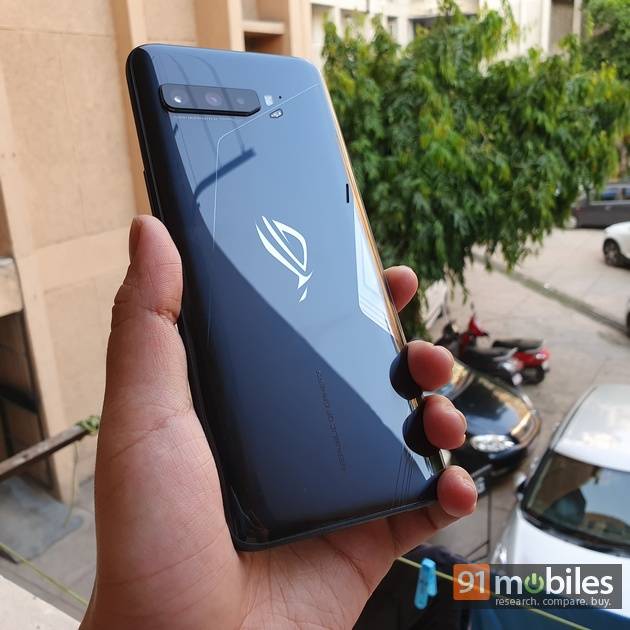
For more casual usage, which involved streaming a lot of content on Netflix, YouTube, and social media browsing, there is no end to the phone’s battery. At the end of the day, the ROG Phone 3 finished with 47 percent battery. It lasted nearly the entire second day as well when I finally put it to charge at around 6.00 pm. On the charging front, ASUS has a 30W charger inside the box, which is not the fastest out there when the likes of iQOO are packing in 65W chargers. However, the ROG Phone 3 manages to charge at 30W for a longer period of time which means that 50 percent of the phone’s 6,000mAh cell is filled up in 30 minutes, while 75 percent can be done in 44 minutes. The speed will then trickle down to fill in the last 25 percent and the total time for a full charge will be around 1 hour 50 minutes. Given the long amount of time you get to play after a full charge, I’m quite satisfied with the charging speeds.
Cameras
- Rear cameras: 64MP primary, 13MP ultra-wide and 5MP macro sensor
- Front camera: 24MP
I have kept the camera portion of the review for last as that appears to be the last priority for ASUS and rightly so. The audience for the device will not concern themselves with how good the colour reproduction on the sensor is or how detailed night photos are. Even so, when compared to the optics on the previous-gen ROG Phones, there are some sizeable improvements this time around. The ROG Phone 3 has a 64MP Sony IMX686 sensor which does not have any OIS or Laser autofocus capabilities. Apart from that, there is a 13MP ultra-wide sensor which has a 125-degree field of view. Finally, we have a 5MP macro camera with an f/2.0 aperture.
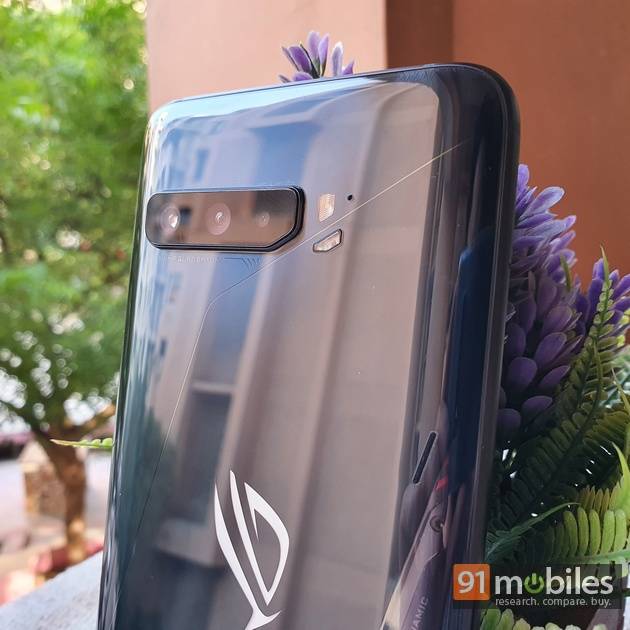
The main camera is quite decent when operated in good lighting conditions. The pictures are crisp with plenty of details although there is slight oversaturation. I generally keep the auto HDR option on as it helps a lot with dynamic range and exposure calibration. AI-scene detection is an additional feature that adds more details to a shot based on the scenario but contrast levels can go slightly awry. You can manually also set the phone to click shots on 64MP mode but there is hardly a significant improvement in quality. The ultra-wide camera on the device is unimpressive in that it does have a wide field of view but its focus is very soft. As a result, quite a lot of detail in photos is smoothened out. The macro shooter doesn’t fare that good as well. It has fixed focus and lower resolution which results in a less detailed photo with average colour reproduction.
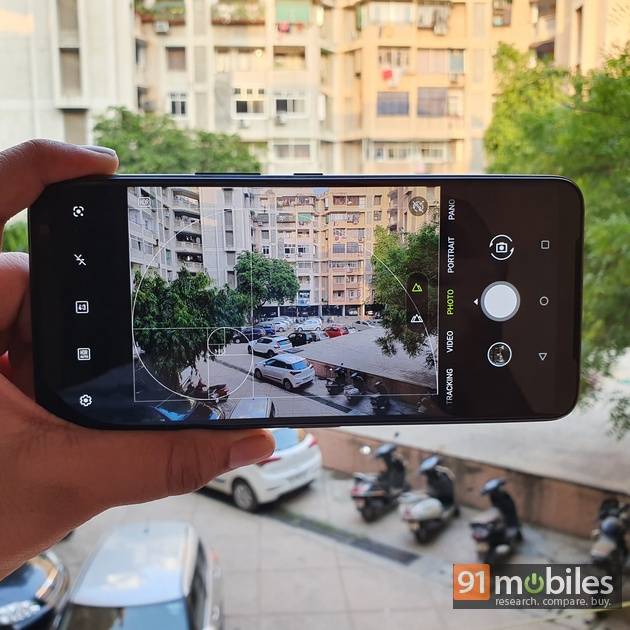
On the video front, the phone boasts of staggering 8K video recording capabilities but only at 30fps. 4K video can be recorded at 120fps while the standard 1080p video has 240fps slo-mo capabilities. The ROG Phone 3 also has a motion tracking feature wherein you can lock the focus on a moving object but I have seen that it works well only in very well lit environments.
Low-light photography is good but not great on the ROG Phone 3. Without the dedicated night mode, the device clicks grainy photos with details dropping exponentially as the lighting dips. In that regard, the dual-LED flash helps to light up a closed space quite well. If you are not into flash photography, the night mode can help out quite a bit with pleasing colours in scenarios where there is street lighting. However, detailing is generally not its strong suit with the camera opting for oversharpening a lot.
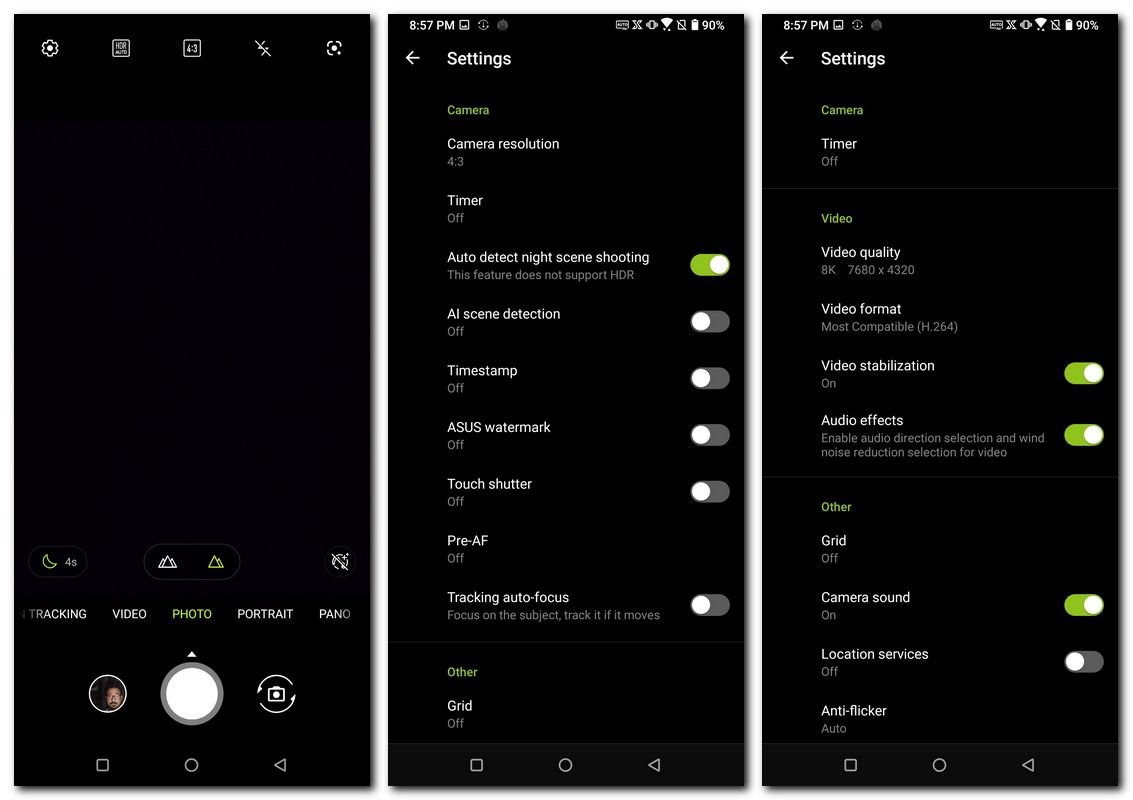
This leaves us with the front camera that has a 24MP selfie camera that also uses pixel-binning to produce fairly detailed 6MP shots. In the day you will be getting good quality selfies with less smoothening that I was expecting. In low light, there is no saving the camera. The selfies are quite terrible and lack any exposure unless you use a front flash in which only helps the sensor slightly.
Final Verdict
So where do we stand on the ROG Phone 3? There is no device like it so there is really no comparing it with the competition. The market for gaming smartphones is still a tad niche and there are only a few phones that cater to that need. That being said, mobile gaming has become what it is thanks to PUBG Mobile. I have reviewed many phones cheaper than the ROG Phone 3 such as the OnePlus 8, iQOO 3, and the Realme X50 Pro, all of which pack in Qualcomm’s Snapdragon 865 chipset and can run the game for a significant amount of time without any lag. What sets the ROG Phone apart are the customisation options to overclock the CPU and the wide amount of accessories that you can attach with the device.
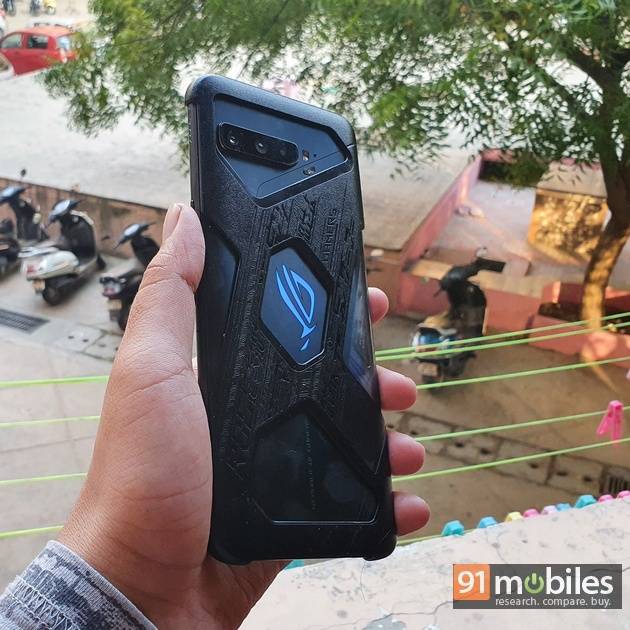
There are features that seem overkill, such as a 144Hz display which no game currently can leverage, but then the device does provide a stellar battery experience which no phone in its price range can match. I think that the ROG Phone 3, like all the previous two versions, is not a device meant for everyone. With its weighty and cumbersome design, unimpressive camera performance, and nuanced gamer aesthetics, the ROG Phone is not something that will appeal to the masses. For its price, the OnePlus 8 Pro provides a more wholesome smartphone experience in terms of general usage. However, if you are a mobile gamer who wants nothing but the best to boost their gaming experience, there is no way you can go wrong with ROG Phone 3. ASUS has done what ASUS does well with its gaming laptop lineup, which is provide the best performance money can buy.
Editor’s rating : 4 / 5
Pros
- Unreal speeds
- Highly colour accurate and smooth 144Hz display
- Great gaming features
- Best-in-class battery life
- Stereo speakers are amazing
Cons
- Quite heavy
- Cameras are average
- Iffy fingerprint scanner
- Design would appeal to a niche audience
 Asus ROG Phone 3 Asus ROG Phone 3 |
vs |  OnePlus 8 Pro OnePlus 8 Pro |
 Asus ROG Phone 3 Asus ROG Phone 3 |
vs |  Black Shark 3 Black Shark 3 |
from 91mobiles.com https://bit.ly/3i4I97I
via gqrds
No comments:
Post a Comment